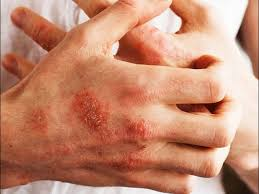1. Understanding Bacterial Skin Infections
Bacterial skin infections occur when harmful bacteria invade the skin, causing symptoms like redness, swelling, pain, and sometimes pus. Common types of bacterial skin infections include cellulitis, impetigo, and folliculitis. Early detection is crucial for effective treatment and preventing the infection from spreading.
2. Importance of Early Diagnosis
Prompt diagnosis is essential to avoid complications. A healthcare professional can diagnose a bacterial skin infection through a physical examination and, in some cases, by taking a sample from the infected area to identify the bacteria involved. This step ensures that the correct antibiotic, such as Cephalexin, is prescribed for effective treatment.
3. Role of Cephalexin in Treating Bacterial Infections
Cephalexin is a widely used antibiotic for treating bacterial skin infections. It belongs to the cephalosporin class, working by disrupting the bacteria's cell wall formation, which ultimately kills the bacteria. Cephalexin is particularly effective against common bacterial strains like Staphylococcus and Streptococcus, which are often responsible for skin infections.
4. Home Remedies to Support Treatment
In addition to taking antibiotics, several home remedies can help alleviate symptoms and speed up recovery:
- Warm Compresses: Applying a warm compress to the infected area can reduce pain and swelling.
- Hygiene Practices: Keeping the area clean and dry is crucial to prevent further bacterial growth.
- Hydration: Drinking plenty of water supports the body’s immune response and promotes healing.
5. Proper Use of Cephalexin
For Cephalexin to be effective, it's important to follow the prescribed dosage and complete the full course of antibiotics, even if symptoms improve. This practice ensures that all bacteria are eliminated and prevents antibiotic resistance.
6. Keeping the Affected Area Covered
Covering the infected area with a sterile bandage can help prevent the spread of bacteria to other parts of the body or to other people. Change the bandage regularly and wash your hands thoroughly afterward to maintain cleanliness.
7. Avoiding Irritants
Avoid using harsh soaps, lotions, or other products that could irritate the infected skin. Opt for mild, fragrance-free products that do not cause further irritation.
8. Dietary Considerations
A healthy diet rich in vitamins and minerals can support the body’s natural healing processes. Include foods rich in antioxidants, such as fruits and vegetables, to boost the immune system.
9. Seeking Medical Advice
If symptoms worsen or do not improve after a few days of home treatment, it is important to seek medical attention. A healthcare provider may need to reassess the condition and adjust the treatment plan, potentially prescribing a different antibiotic or additional medications.
By combining the use of Cephalexin with these home treatment measures, bacterial skin infections can be effectively managed, promoting faster recovery and preventing complications.

